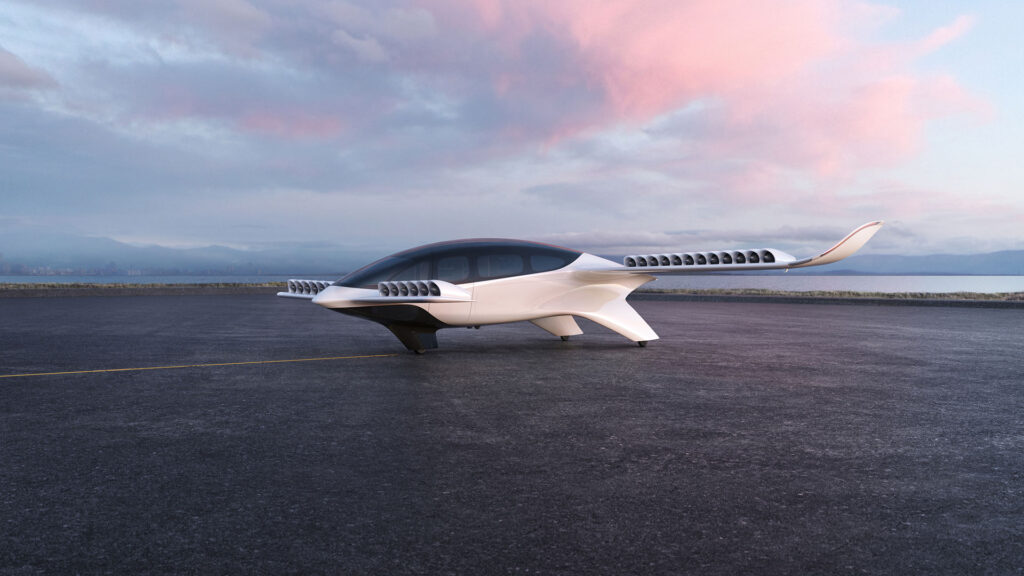
The UAE has taken a bold and groundbreaking step toward redefining urban transportation with the launch of a major initiative focused on mapping air corridors and developing a regulatory framework for manned and autonomous air taxis and cargo drones. This visionary project represents a quantum leap forward in the country’s commitment to becoming a global leader in future mobility solutions. Through a strategic partnership between the Federal General Authority for Civil Aviation (GCAA) and ASPIRE, an entity under the Advanced Technology Research Council (ATRC), along with the Technology and Innovation Institute (TII), the UAE is actively reshaping how people and goods move within urban airspace.
This initiative aligns with the UAE’s broader ambition to create a Aviation smart, technologically advanced transportation infrastructure that reduces congestion on traditional road networks and enhances connectivity within its cities. By integrating advanced air mobility (AAM) solutions, the UAE is positioning itself at the forefront of an aviation revolution that will transform urban mobility into a safer, more efficient, and more sustainable system.
A Transformative Collaboration
The UAE’s air mobility initiative is expected to significantly enhance urban connectivity while also promoting the adoption of sustainable and accessible transportation solutions. This effort will involve extensive research and collaboration among various stakeholders to develop a structured airspace that ensures the smooth operation of manned and autonomous aerial vehicles.

As part of this vision, air corridors will be mapped and regulations formulated over the next 20 months. These developments will pave the way for the seamless integration of air taxis and cargo drones Aviation into the UAE’s urban landscape, enabling faster, more efficient travel while reducing dependency on traditional ground transportation.
“Our innovative collaboration with GCAA is reimagining the future of urban transportation,” stated Dr. Najwa Aaraj, CEO of TII. “By improving airspace management and integrating manned and autonomous air taxis and cargo drones, we will not only strengthen urban connections but also advance sustainable and accessible mobility solutions that will benefit future generations.”
This partnership highlights the UAE’s commitment to deploying cutting-edge transportation technologies that are both safe and environmentally friendly. With air corridors designed to interconnect the country’s major international airports, key commercial hubs, and prominent tourist attractions, the UAE aims to become a global benchmark for smart urban mobility.
Establishing Air Corridors and Regulatory Frameworks
The implementation of air corridors for air taxis and cargo drones represents a major advancement in urban transportation planning. The corridors will provide designated flight paths that ensure the orderly movement of aerial vehicles, reducing the risk of congestion and accidents. To achieve this, the UAE will focus on developing sophisticated air traffic management systems that facilitate seamless coordination between different aerial Aviation transport modes.
His Excellency Saif Mohammed Al Suwaidi, Chairman of GCAA, emphasized the importance of this milestone, stating: “Mapping air corridors for manned and autonomous air taxis and drones is a crucial step toward integrating advanced air mobility into the UAE’s infrastructure. This initiative will bring transformative solutions to urban transportation, paving the way for a smarter, more connected future by ensuring the adoption of safe and efficient air mobility.”
To successfully integrate these new forms of air mobility, the UAE will establish a robust regulatory framework covering:
- Flight Safety and Air Traffic Control: Regulations will ensure that air taxis and drones operate safely within designated corridors without interfering with existing commercial aviation routes.
- Infrastructure Development: The initiative will include building dedicated takeoff and landing zones, known as vertiports, in key urban areas to facilitate smooth passenger and cargo operations.
- Operational Guidelines: The framework will establish standards for pilot training, vehicle certification, and maintenance procedures to guarantee the safety and reliability of autonomous aerial vehicles.
- Data Security and Privacy: Given the reliance on AI and data analytics, regulations will address cybersecurity risks and ensure passenger and cargo data is protected.
The Role of Advanced Air Mobility (AAM) in Urban Transport
The UAE’s urban transportation strategy integrates Advanced Air Mobility (AAM) to create a more flexible and efficient transport network. AAM refers to automated aircraft systems designed to transport passengers and cargo within urban and suburban areas, utilizing AI-powered navigation and real-time data analytics.
Professor Enrico Natalizio, Principal Investigator at TII’s Autonomous Robotics Research Center, elaborated on the technological advancements required to achieve this goal: “At TII, we develop advanced AI-powered control, vision, and communication algorithms for autonomous systems that enable real-time decision-making for air taxis and drones. Mastering this technology will allow us to propose methodologies for the design of AAM corridors that optimize routes, avoid collisions, and integrate seamlessly into urban airspace. This marks a key step toward achieving safe and efficient autonomous air mobility in complex urban environments.”
Economic and Environmental Benefits
The introduction of air taxis and cargo drones presents numerous benefits that extend beyond enhanced mobility. These include:
Economic Growth and Job Creation
- The air mobility sector is expected to contribute significantly to the UAE’s economy by fostering new business opportunities and attracting international investments.
- The development of AAM infrastructure, including vertiports and Aviation air traffic control systems, will generate employment in various fields such as engineering, logistics, and air traffic management.
- The presence of a well-regulated air mobility network will encourage global companies to establish research and development hubs in the UAE, driving innovation and technological advancements in aviation.
Environmental Sustainability
- Unlike traditional ground-based transportation, which relies heavily on fossil fuels, air taxis and cargo drones are designed to be energy-efficient and environmentally friendly.
- Electric vertical take-off and landing (eVTOL) aircraft produce significantly lower carbon emissions compared to conventional vehicles, contributing to the UAE’s broader sustainability goals.
- The shift to aerial transportation can help alleviate road congestion, reducing vehicle emissions and improving air quality in urban centers.
Overcoming Challenges in Air Mobility Implementation
While the UAE’s ambitious Aviation air mobility plan holds immense promise, it is not without challenges. Some key obstacles that must be addressed include:
Technological Hurdles
- AI-powered navigation systems must be rigorously tested to ensure they can operate safely in dynamic urban environments.
- Advanced battery technology is needed to support the long-distance travel capabilities of electric air taxis while maintaining efficiency.
Public Acceptance and Adoption
- Public perception of air taxis and drones must be carefully managed through education and awareness campaigns to ensure widespread acceptance.
- Clear communication regarding safety standards and operational transparency will be essential in building trust among passengers and businesses.
Regulatory Compliance
- The UAE must coordinate with international aviation authorities to align its air mobility regulations with global standards.
- Collaborative efforts with neighboring countries will be necessary to facilitate cross-border aerial transportation networks in the future.
Future Prospects and Global Impact
The UAE’s proactive approach to integrating air taxis and cargo drones into urban mobility will serve as a model for cities worldwide. With air corridor mapping already in progress, the country is poised to become a leader in aerial transportation solutions.
Stephane Timpano from ASPIRE commented on the long-term vision: “Addressing real-time urban mobility challenges through innovative solutions like air taxis and drones is a major step forward. By creating flexible and diverse transport systems that relieve pressure on city infrastructure, this initiative directly supports sustainable economic growth and enables smarter, more resilient cities.”
The agreement between GCAA, ASPIRE, and TII was officially announced during the World Governments Summit 2025, further reinforcing the UAE’s commitment to setting a global precedent in urban air mobility.
The UAE’s bold initiative to map air corridors and develop a regulatory framework for air taxis and cargo drones is a testament to the country’s forward-thinking approach to urban transportation. By leveraging AI, automation, and innovative airspace management, the UAE is setting the stage for a smarter, more connected future. As the project unfolds over the next 20 months, the world will be watching closely, eager to learn from the UAE’s pioneering advancements in aerial mobility.
This initiative is not only about redefining transportation—it is about shaping the future of mobility on a global scale.

